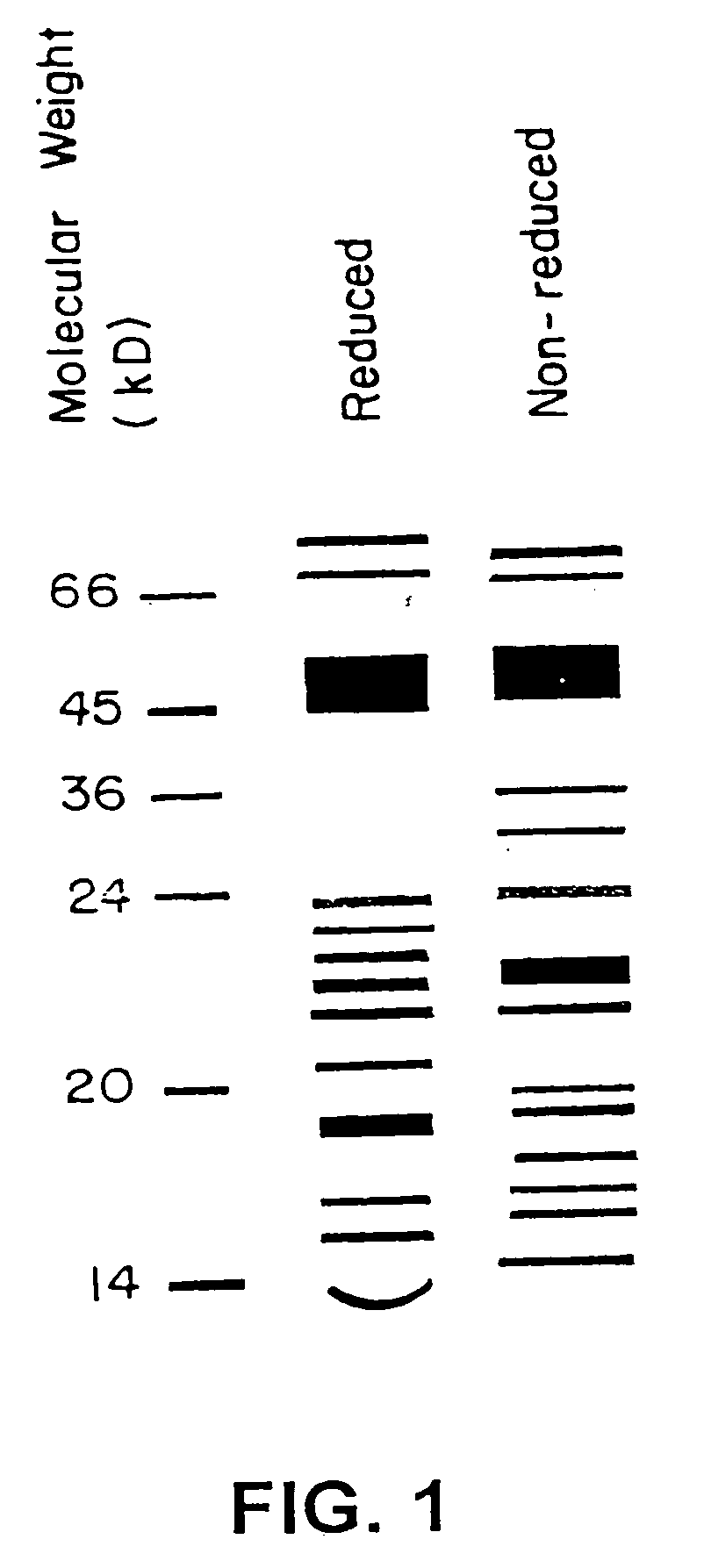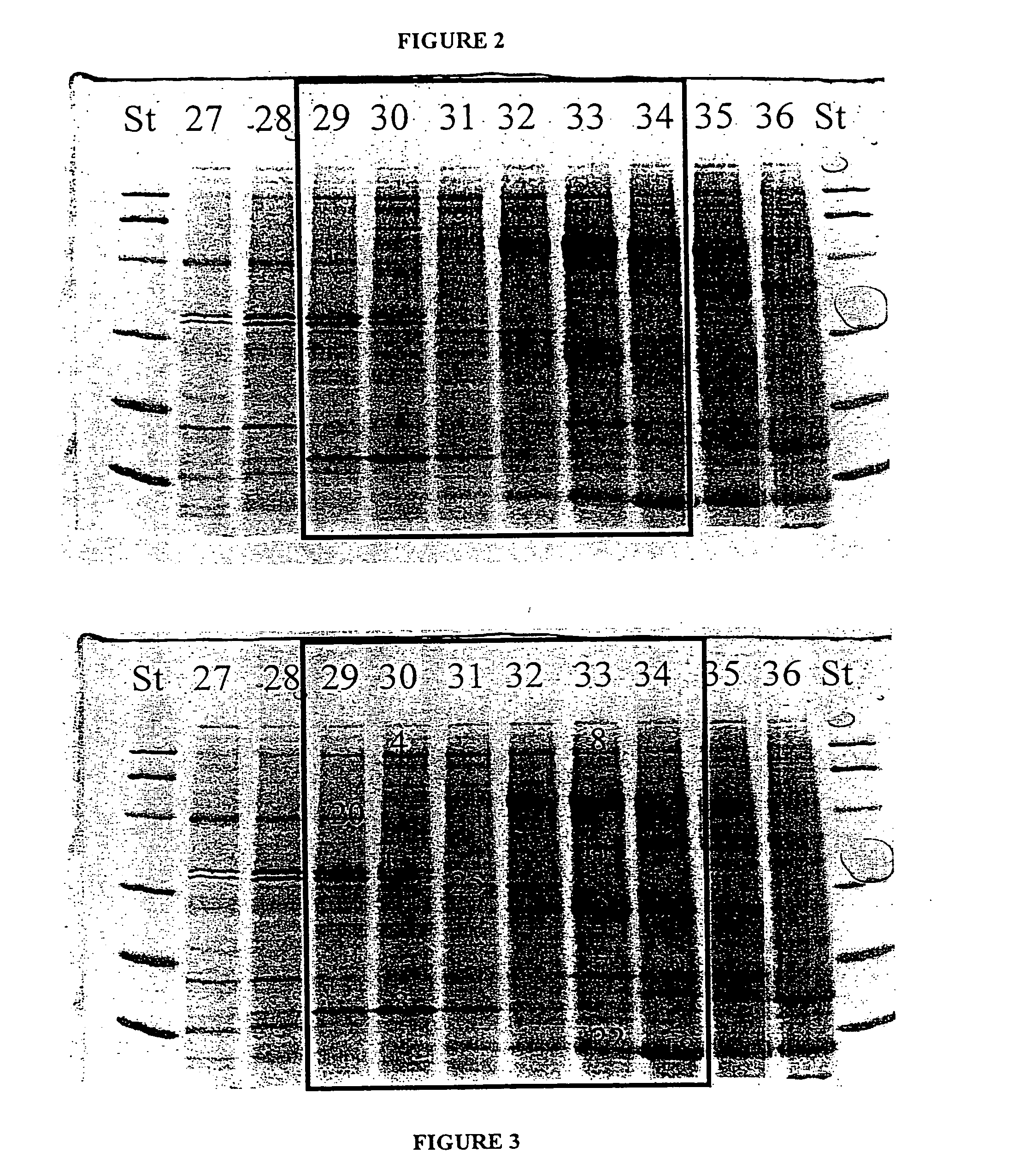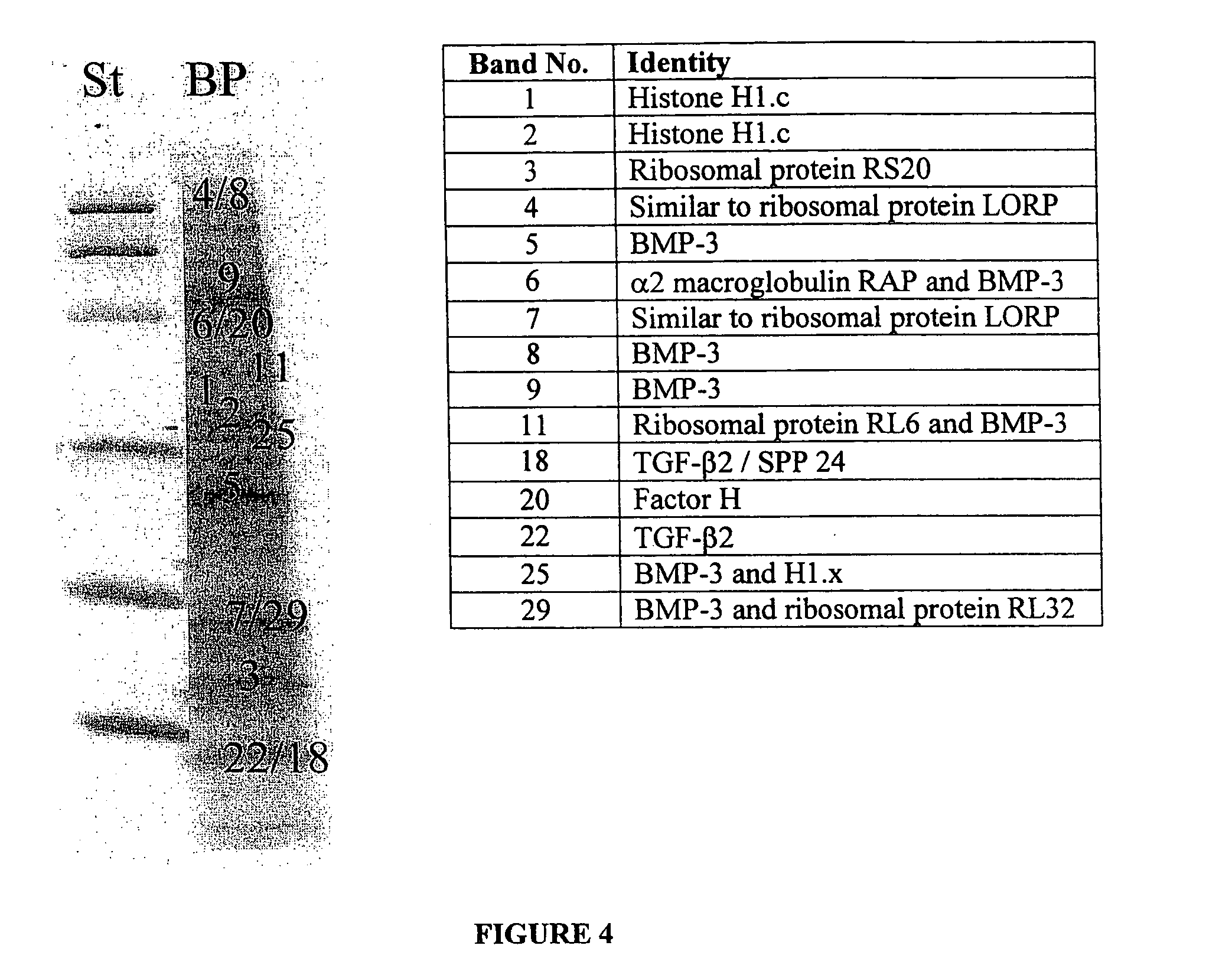Implantable osteogenic material
a technology of osteogenic material and collagen, which is applied in the direction of phosphorous compound active ingredients, prosthesis, peptide/protein ingredients, etc., can solve the problems of inability to properly handle and/or implant the material at the desired site within the body, the glycerol at certain levels can be toxic, and the existing osteogenic compositions have relatively poor handling characteristics, etc., to achieve superior in vivo delivery of osteogenic growth factors, promote bone growth, and improve the effect of quality
- Summary
- Abstract
- Description
- Claims
- Application Information
AI Technical Summary
Benefits of technology
Problems solved by technology
Method used
Image
Examples
example 1
Composition for Periodontal Bone Regeneration
[0081] Purified fibrillar bovine tendon type I collagen is dispersed in a slightly acidic aqueous solution, preferably about 10 mm HCl to provide a concentration of about 1-3% (wt. / vol.), preferably 1-2%. An effective amount of an active ingredient or agent, preferably an osteoinductive substance such as a bone growth factor, is also combined in the dispersion. The amount of agent added depends on the specific activity and purity of the agent. An “effective amount” of a biologically active agent is an amount sufficient to elicit a desired biological response. Suitable osteoinductive substances and other active agents are described above under “General Materials and Methods.” In the case of a purified bone growth factor, the effective amount is preferably between about 0.1% (by weight of the total weight of the final composition) and about 3-4%. One suitable bone growth factor is SBI Growth Factor Mixture GFm, as described in U.S. Pat. No...
example 2
Composition for Use with a Spinal Cage for Spinal Fusion
[0091] In spinal fusion operations in which it is desired to substantially immobilize two vertebrae with respect to each other, titanium cages or similar implantable devices may be are placed in the space between two vertebral bodies. An osteogenic material is packed into and around the cages to obtain bone formation through and around the cages, thus fusing together two vertebrae and stabilizing the spine.
[0092] The present invention provides a new composition that is suitable for insertion into a such a spinal cage, the composition being prepared similarly to that described above for preparing a periodontal composition or device. In this case, however, the collagen concentration is preferably greater to provide a stronger, more resilient or sponge-like product, the number of passages through the syringe assembly is increased, and the bulking material is preferably omitted. Purified fibrillar bovine tendon type I collagen is...
example 3
Surgical Kit Containing a Collagen-Growth Factor Matrix
[0097] The new compositions or devices described in Examples 1 and 2 can be included as part of a kit containing the components of the materials. Such kits are particularly useful for health care professionals in preparing the materials and compositions of the present invention immediately before use. In addition to including the component parts of the various materials and compositions described above, a kit may also include one or more containers for mixing the components, along with optional mixing devices such as stirrers or applicators. Further, such kits can include the components in sealed, pre-measured packages. The sealed packages can be sealed septically and the amounts of the components can be pre-measured in relative amounts as described elsewhere herein. Alternatively, the kit might simply contain one or more of the new osteogenic compositions or devices in hydrated, pre-shaped, ready-to-implant form, optionally, a...
PUM
| Property | Measurement | Unit |
|---|---|---|
| time | aaaaa | aaaaa |
| thick | aaaaa | aaaaa |
| pH | aaaaa | aaaaa |
Abstract
Description
Claims
Application Information
 Login to View More
Login to View More - R&D
- Intellectual Property
- Life Sciences
- Materials
- Tech Scout
- Unparalleled Data Quality
- Higher Quality Content
- 60% Fewer Hallucinations
Browse by: Latest US Patents, China's latest patents, Technical Efficacy Thesaurus, Application Domain, Technology Topic, Popular Technical Reports.
© 2025 PatSnap. All rights reserved.Legal|Privacy policy|Modern Slavery Act Transparency Statement|Sitemap|About US| Contact US: help@patsnap.com



